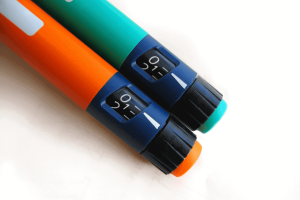Fact or Fad: What you need to know about a “clean” eating diet
Forget dieting and counting calories. A new kind of eating plan promises the same healthy-living, weight loss results, all without the struggle of traditional diet techniques.
Throughout the past five years, the “clean eating” diet has generated buzz from celebrities, doctors, and nutritionists from around the world. The rules to eating clean are simple: Eat foods as close to their natural state as possible. This means cutting out items that are highly processed or packed with preservatives, added fats, and sugars. At the same time, you also want to avoid foods that have had their nutritional value stripped from them. Instead of eating foods “fortified” with added vitamins, stick to the natural nutrients found in fresh produce and whole grains. Say goodbye to peanut butter Cheerios and hello to steel cut oats with an all-natural peanutty spread.Which foods are considered “clean,” then? According to Clean Eating Mag, most people who adopt a clean diet eat items such as unrefined whole grains, an abundance of fresh produce, free-range or grass-fed meat and dairy, alongside nuts, avocados, olive, and coconut oil for a hearty dose of natural, healthy fats.
What does this mean for your diabetes? Physicians at WebMD agree that a clean eating diet may be beneficial for people with type 1 and type 2 diabetes. Unlike other fad diets, the clean eating method focuses on nutritional balance and value. Because no food groups are cut out, people with diabetes can still get the carbs and sugar they need–just from healthier sources. Instead of reaching for an over-processed cookie during a low, the clean eating diet encourages people to opt for high-sugar fruits instead. Carbs come from unrefined pastas and whole grains, as opposed to white bread and sugar-laden pastries.
Though eating clean may sound like an ideal diet solution, cutting out foods with preservatives or processed sugars can be expensive and time consuming. After a week of produce and un-processed foods, a candy bar will be much more difficult to resist. This is why some physicians recommend adopting the 80/20 rule. Instead of cutting out processed foods entirely, many find it easier to eat clean the majority of the time, while saving a little room for a treat. This could mean a box of your favorite cereal or a carton of fruit-flavored yogurt.While there is no diet deemed “perfect” for people with diabetes, the clean way of eating has been proven to be safe and effective in helping people lose weight and take control of their blood sugar levels. Before you begin a new eating schedule, make sure to talk to your doctor about foods and eating plans that work best for you and your body. Also remember that clean eating was not designed to be a fad diet. Eating well is a lifestyle choice that can not only help you control your diabetes now but may also work to prevent complications or health concerns in the future.
Photo credit: Rick on Flickr



